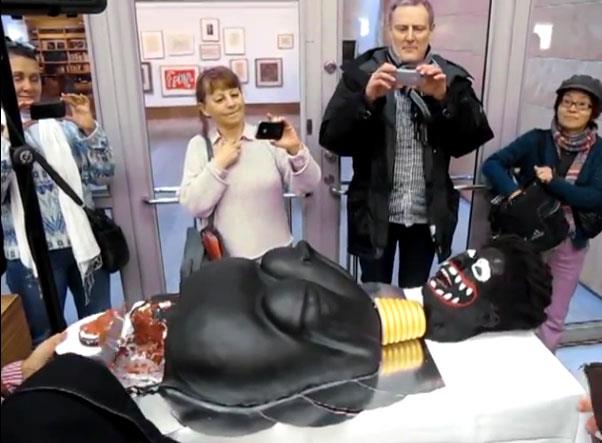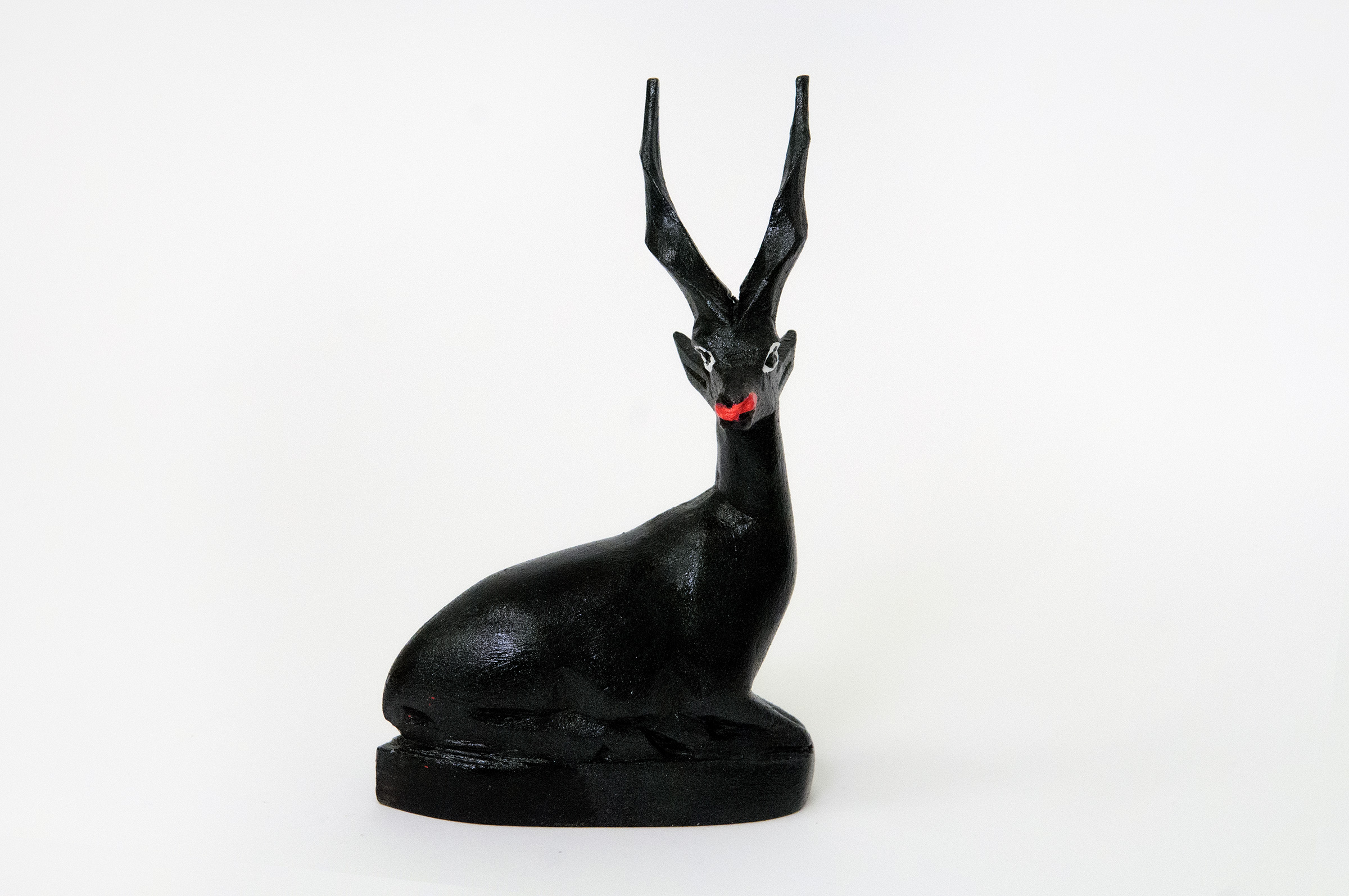

As a relational artwork, it was an artistic experience for me too. Imagine people standing half a meter from your head and talking about you as if you weren’t there. “It was an experience of total objectification,” he says. Lying in the box was extremely uncomfortable for Makode Linde. “She has tried to force us all into becoming entrepreneurs,” Marianne Lindberg De Geer says, “so I decided to try to boost my income as a freelancer at her expense.” Marianne Lindberg De Geer does say, though, that she probably wouldn’t have sold the picture if it hadn’t been the intensely disliked, neo-liberal Culture minister in it. None of the people I speak to–Makode Linde, Marianne Lindberg De Geer or organizer Pontus Raud–claim they knew what the other parties were going to do. The idea that it was a conspiracy meant to trap Sweden’s Culture Minister, as we first suggested in our first take on Linde’s performance, can probably be abandoned.

I feel I should probably apologise to Makode for ruining his work by spreading that picture. It was like the Milgram electric shock experiment, no-one stepped in to prevent the simulated pain from happening. We were all assured that it was alright, that it was art, that this was part of the performance. “We were all complicit,” Marianne Lindberg De Geer says. Everyone seems to have a different reaction in the room. Some try to check if Makode Linde is okay, lying there in his cramped box. And for almost an hour, Makode Linde screams and screams as person after person cuts into the cake. It was horrifying, so aggressive, the scream,” Marianne Lindberg De Geer says. When the Culture minister started cutting the cake, she snapped “perhaps 25 or 30” pictures, and caught the second time the minister leans over to feed the artist, “like a mother feeding a crying child.”

(In one recurring work, both like and fundamentally unlike Makode Linde, she enters into the experience of others by painting her own face over stereotypical depictions.) She knew something was about to happen, and readied her camera, pushing herself through the crowd.

She is also an artist, one of Sweden’s best known, and like Makode Linde’s, her work is based on identity and identification, the experience of being Othered, in her case as a woman. Marianne Lindberg De Geer took the picture that made the cake known, worldwide. (An accusation subtly imparted by the painted blackface.) The faceless Venus was also ideal to paint in the stereotypical looks of the Afromantic series, and to make the work more brutal and more relational he included himself as the head. (Though he did briefly toy with the idea of making a chocolate Naomi Campbell.) Since the cake was to go on display in a museum, he wanted to work with something from the Eurocentric discipline of Art History, and so chose the body of the ultimate canonical classic, Venus from Willendorf, the supposed origin of a story that has always excluded African or African-bodied voices. When Pontus Raud of the Swedish Artists’ Organisation called in asking for the cake, Makode knew he wanted to make it an Afromantic. “The outlines, the specific features of the faces of these items are completely obscured,” Makode Linde says, “their character is completely removed, and they have this new, supposedly ‘African’ character imposed on them.” It’s an almost painfully symbolic reproduction of the process of Othering, diverse individuals being forcibly assigned a simplistic shared identity. The name, he says, reflects on the romanticized, supposedly positive stereotype of the happy, grinning ‘pickaninny’ (a caricature of black children) that appears on all the artworks, and is meant to show the connection between those stereotypes and the more vicious ones, all connected in the same system of oppression.Įach Afromantic is based on taking an item from Eurocentric art or popular culture and painting stereotypical blackface on top of it. But it also really seems to have driven all the trolls out of the woodwork.” Strange to think that before last weekend, it was just another Afromantic.Īfromantics’ is Makode Linde’s line of artworks that use the blackface figure that has now become so infamous. People are talking about this in Africa, in South America,” he says, “there are so many different interpretations of what it means, and I don’t want to take away any of that. It’s not meant to represent anything, except me. Makode Linde seems more bemused than irritated when we discuss the huge, worldwide storm that his cake has stirred.


 0 kommentar(er)
0 kommentar(er)
